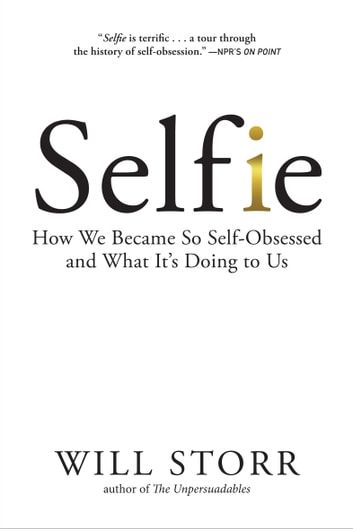Art and Culture
The Birth of the Narcissism Revolution
The Human Potential Movement had posed the Western self a question: if God is inside all of us, then doesn’t it naturally follow that we are all Gods?

Editor’s note: the following is an extract of Selfie: How We Became So Self-Obsessed and What It’s Doing to Us, The Overlook Press; 1 edition (March 27, 2018), 416 pages.

In the months leading up to his death, in 1970, the humanistic psychologist Abraham Maslow began worrying about his legacy. He’d been preparing to write a critique of Esalen ‘and its whole chain’. One of the issues he’d become concerned with was self-esteem. Maslow was famous, most of all, for his hugely influential ‘Hierarchy of Needs’, which said that people are motivated to fulfill certain psychological appetites. At the top of his pyramid was ‘actualization’, which was extremely difficult and had, he thought, only been achieved by a few. But just beneath that was ‘esteem’. It seems that Maslow had been carrying out some tests on high-esteeming people that had been the cause of some concern: ‘High scorers in my test of dominance feeling, or self-esteem, were more apt to come late to appointments with the experimenter, to be less respectful, more casual, more forward, more condescending, less tense, anxious and worried, more apt to accept an offered cigarette, much more apt to make themselves comfortable without bid-ding or invitation.’
He wasn’t the only Human Potential guru who’d apparently come to a place of doubt late in life. According to Dr William Coulson, the chief of staff at Rogers’ Western Behavioral Sciences Institute, ‘After several years in California, Carl got so tired of having aspirants arrive at our door with no intention or ability to WORK that he sent out a letter. It said, in fact, “Less self-esteem, please. More self-discipline.”’
In December 1973, Esalen hosted a conference in San Fran- cisco called ‘Spiritual and Therapeutic Tyranny: The Willingness to Submit’. The Institute’s co-founder, Michael Murphy, had grown troubled, both by his observations of a cultish, guru-worshipping aspect that was developing in some quarters and also by new commercialized forms of personal transformation workshops, such as EST, which took place over two weekends and combined Esalen-style Human Potential thinking with a sales seminar format more familiar in an earlier period of America’s history. EST was created in 1971 by Werner Erhard, an Esalen graduate and student of both Carl Rogers and Abraham Maslow, who had also been a fan of a Dale Carnegie course he’d attended. Erhard, writes Truett, ‘Americanized the human potential movement in a way that Esalen had never done or tried to do.’ It was an instant success: fifty thousand people took the workshop in its first four years and it ended up boasting celebrity attendees including John Denver, Cher and Peter Gabriel. It represented a kind of business-ification of Human Potential methods that Murphy hoped to distance Esalen from with his conference.
It didn’t go well. Despite being organized by a mostly female committee, all twenty-six speakers were male – which led to protests, outside the venue, by feminists from Esalen’s San Francisco office. A journalist covering the event, Peter Marin of Harper’s Magazine, described the crowd of several hundred attendees as ‘restless, impatient, volatile; one could feel rising from it a palpable sense of hunger, as if these people had somehow been failed by both the world and their therapies.’ They had come to the conference, he wrote, for the same reason they had attended the workshops: ‘to find help. The human potential movement had still not done for them what it had promised, their lives had remained the same or perhaps worsened, and the new world, the promised transformation, seemed very slow in coming.’ As the event ground on, the audience barracked the panelists and the panelists shouted at each other. In his keynote address, the writer Sam Keen pointed out, devastatingly, that the ‘usually male, privileged’ leaders of the movement had hardly demonstrated, in their own selves, the efficacy of what they preached. ‘The best therapist turns out to have a clay heart. And Fritz was a dirty old man. And Freud couldn’t give up cigars. And Bill Schutz doesn’t jump for joy.’ It was a criticism redolent of an observation made by a former lover of Michael Murphy, who had himself suffered lifelong mental-health problems: ‘He got a million dollars’ worth of advice from some of the best psychologists in the country. None of it helped.’
Peter Marin’s report on the conference would end up being part of a cover story for Harper’s, published in October 1975. He captured what happened when Christian introspection met Human Potential’s belief that perfection, not evil, lay in our souls. The speakers, wrote Marin, exhibited ‘a tyrannical refusal to acknowledge the existence of a world larger than the self’ and when the audience questioned the panellists, ‘the questions they asked were invariably concerned with themselves, were about self-denial or self-esteem, all centred on the ego, all turned inwards’. The Human Potential Movement had posed the Western self a question: if God is inside all of us, then doesn’t it naturally follow that we are all Gods? Now the Western self had given its answer. Marin called his story ‘The New Narcissism’. It described the stunning darkness of Esalen’s conviction that, as gods, all humans have complete responsibility for everything that happens to them, even including the Jews that ‘burned’ in the Holocaust. When Marin asked one counsellor, at the institute, whether we owe anything to a child starving in the African desert, she snapped angrily back at him, ‘What can I do if a child is determined to starve?’

Ten months later, America’s chief chronicler of culture, Tom Wolfe, would author his own cover story on the subject, this time in New York Magazine. He named Esalen ‘Lemon Session Central’ and described the programmes of Fritz and Schutz in wild and cynical terms. ‘Outsiders, hearing of these sessions, wondered what on earth their appeal was,’ he wrote. ‘Yet the appeal was simple enough. It is summed up in the notion: “Let’s talk about Me.” No matter whether you managed to renovate your personality through encounter sessions or not, you had finally focused your attention and your energies on the most fascinating subject on earth: Me.’ Wolfe’s piece was called ‘The “ME” Decade’.
The old-age concerns of Maslow and Rogers had come too late. Their bright ideas had run out of control. But this feel-good American revolution, in which the interior self was recast as holy, and took responsibility for everything that happened to it, would turn out to be perfect for the coming times. In the 1970s and 1980s, as the economy underwent new, dramatic changes, the English-speaking nations became feverish with the idea that all of society’s problems, from unemployment to child abuse to domestic violence, could be solved by teaching the people to believe in their authentic, godlike selves. This harsh new world would be no place for ‘fakes’ or ‘shitheads’ or ‘weepers’. Everyone was special, and had what it took to thrive. All they had to do was believe.
One of the invited speakers, at Esalen’s terrible conference, was an imposing and angry politician with a deep, wounded-bear voice, who’d had his life changed partly by his experiences at the Institute, having first visited in 1962. He would help take Esalen’s stated mission – ‘that all men somehow possess a divine potentiality; that ways may be worked out – specific, systematic ways – to help, not the few, but the many toward a vastly expanded capacity to learn, to love, to feel deeply, to create’ – into the 1980s and beyond . . . into schools and prisons and courts; into government policy and around the world. He too would be dogged by the imperishable charge that all he was doing was indulging and encouraging narcissism.
He was a reformed Catholic, a disciple of Carl Rogers, an Esalen alumnus and soon to become one of the most powerful men in California. He was John ‘Vasco’ Vasconcellos and the mission of his life would be to give the world self-esteem.






